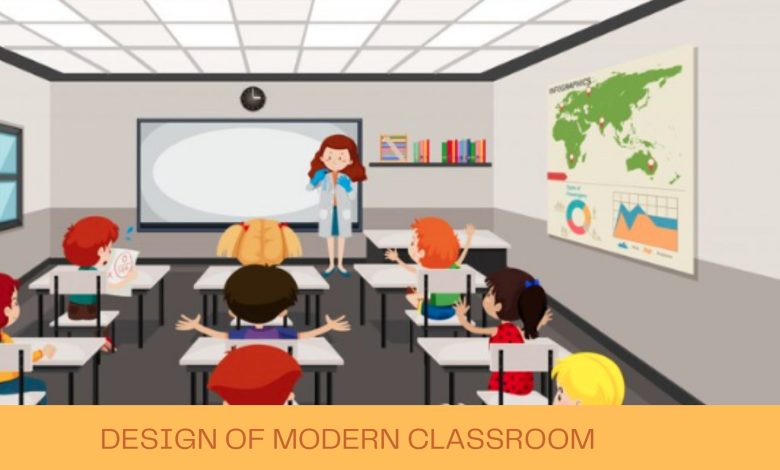How to Design a Modern Classroom for Kids and Teen

In recent years, the concept of a modern classroom has evolved significantly, driven by advancements in technology and a shift towards more collaborative and interactive learning environments. Designing a modern classroom requires careful consideration of various factors, including flexible furniture arrangements, advanced technology integration, and creating spaces that foster creativity and engagement. In this article, we will explore the essential elements and best practices to design a modern classroom in 2023.
In the digital age, traditional classroom setups are giving way to innovative designs that enhance learning experiences. A modern classroom combines technology, flexibility, and creative spaces to facilitate effective teaching and learning.
The Importance of Modern Classroom Design
A well-designed modern classroom can have a big impact on how students learn and work together. It creates a space that helps students stay interested and participate actively, leading to better outcomes in their education. When the classroom is designed well, it can adapt to different teaching methods, making it easier for teachers to teach and for students to understand. The layout of the classroom, the furniture, and the technology all play a role in creating an environment that is conducive to learning.
For example, having comfortable seating and enough space for group work can encourage collaboration and teamwork. Additionally, incorporating interactive whiteboards or projectors can make lessons more engaging and interactive. Overall, a thoughtfully designed modern classroom can enhance student engagement, promote collaboration, and ultimately contribute to improved learning outcomes.
Flexibility in Furniture Arrangement
In modern classrooms, the arrangement of furniture is made flexible to suit different learning activities. The furniture can be easily moved around and adjusted to meet the needs of the students. For example, desks on wheels allow for easy reconfiguration, enabling students to work in groups or individually as required. The seating in the classroom is also adjustable, allowing students to find a comfortable position that suits their learning style. Additionally, modular furniture is used, which means that it can be rearranged and adapted to create different learning spaces.
This flexibility in furniture arrangement encourages collaboration among students, as they can easily gather in groups for discussions or projects. It also promotes individual learning by providing a comfortable and personalized environment for students to focus on their tasks. Overall, the use of flexible furniture arrangements in modern classrooms facilitates collaboration, group work, and individual learning
Technology Integration
Technology integration is essential in a modern classroom to enhance the learning experience. Interactive whiteboards, audiovisual systems, and digital devices actively support dynamic teaching and multimedia presentations. Students can engage with the content directly, participate in activities, and retain information more effectively. By incorporating visual and auditory elements, lessons become more engaging and memorable.
Digital devices, such as tablets or laptops, provide students with access to a vast array of educational resources and tools. They can conduct research, collaborate on projects, and create multimedia presentations, fostering critical thinking and creativity. Technology integration transforms the classroom into an interactive learning environment, where students actively participate, collaborate, and develop crucial 21st-century skills.
Creating Collaborative Spaces
Creating collaborative spaces in the classroom actively promotes teamwork, problem-solving, and communication skills among students. Incorporating group workstations, breakout areas, and comfortable seating arrangements actively encourages collaboration and peer learning. Group workstations actively provide dedicated spaces where students can work together on projects, exchange ideas, and solve problems as a team. These workstations actively facilitate interaction and cooperation among students, actively promoting teamwork and collaborative problem-solving.
With comfortable seating arrangements, such as flexible seating options or cozy corners, students actively feel at ease expressing their thoughts and opinions. This active and relaxed atmosphere actively promotes collaboration and peer learning, as students actively engage with one another.
Fostering Creativity and Engagement
A modern classroom that inspires creativity and engagement includes dedicated spaces for art, music, and hands-on activities, along with the integration of interactive learning tools. This combination stimulates students’ imagination, encourages active involvement in the learning process, and cultivates a vibrant and dynamic educational experience.
Hands-on activities, such as science experiments or project-based learning, promote active learning and critical thinking. They enable students to apply theoretical knowledge in a practical and engaging manner. By providing materials and resources for hands-on exploration, students can actively participate and deepen their understanding of various subjects.
Incorporating interactive learning tools, such as digital devices or educational apps, brings a dynamic element to the classroom. These tools can facilitate interactive lessons, virtual simulations, and multimedia presentations, capturing students’ attention and encouraging active participation.
Incorporating Natural Lighting and Colours
The inclusion of natural lighting and careful selection of colour schemes have a profound impact on the classroom environment. By strategically placing windows to optimize the entry of sunlight and employing warm and inviting colours, an atmosphere that is positive, stimulating, and conducive to learning is created. Ample natural light enhances visibility, reduces eye strain, and improves overall mood, fostering a sense of well-being among students and teachers alike.
Additionally, the use of soothing colours like blues and greens can create a calming effect, while vibrant hues like yellows and oranges can energize and inspire creativity. A thoughtfully designed classroom that incorporates natural lighting and harmonious colour choices promotes a productive and engaging learning environment, positively influencing the overall educational experience for students.
Enhancing Accessibility
Designing a classroom that meets the needs of all students is crucial. By incorporating wheelchair accessibility, desks that can be adjusted, and using audio-visual aids for students with hearing impairments, we create an inclusive and supportive learning environment.
Balancing Digital and Analog Resources
While technology is integral to modern classrooms, it is crucial to strike a balance between digital and analog resources. Incorporating traditional learning tools such as books, manipulatives, and writing surfaces alongside digital resources enables a well-rounded learning experience.
Designing for Wellness and Comfort
Considering student comfort and well-being contributes to a conducive learning environment. Ergonomic furniture, proper ventilation, and temperature control systems promote student focus, health, and overall well-being.
Future-Proofing the Classroom
Designing with future advancements in mind ensures the classroom remains relevant for years to come. Planning for flexible technology integration, adaptable spaces, and easy upgrades enables the classroom to evolve with changing educational needs.
Evaluating the Impact of Design
Regular evaluation of the classroom design is essential to measure its effectiveness. Gathering feedback from students and educators, observing learning outcomes, and making necessary adjustments help optimize the learning environment and promote continuous improvement.
Conclusion
Designing a modern classroom in 2023 involves considering flexibility, technology integration, collaboration spaces, creativity, accessibility, and student well-being. By implementing these principles, educators can create an engaging and inclusive learning environment that prepares students for the challenges of the future.


